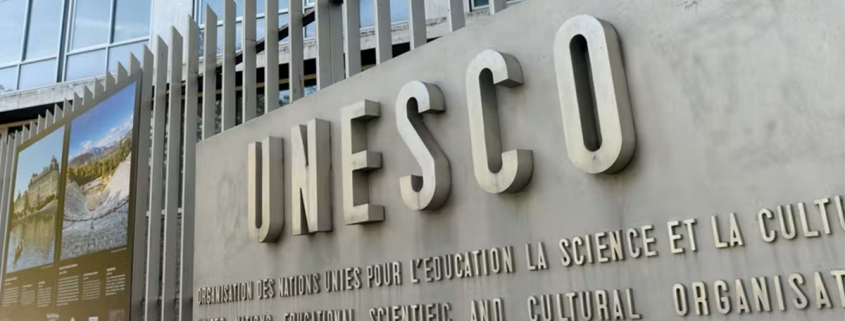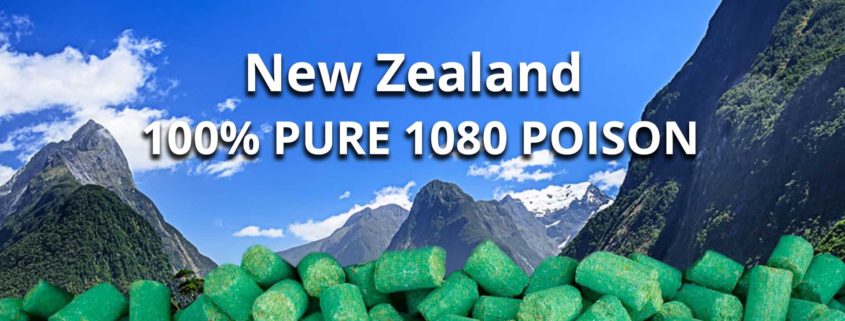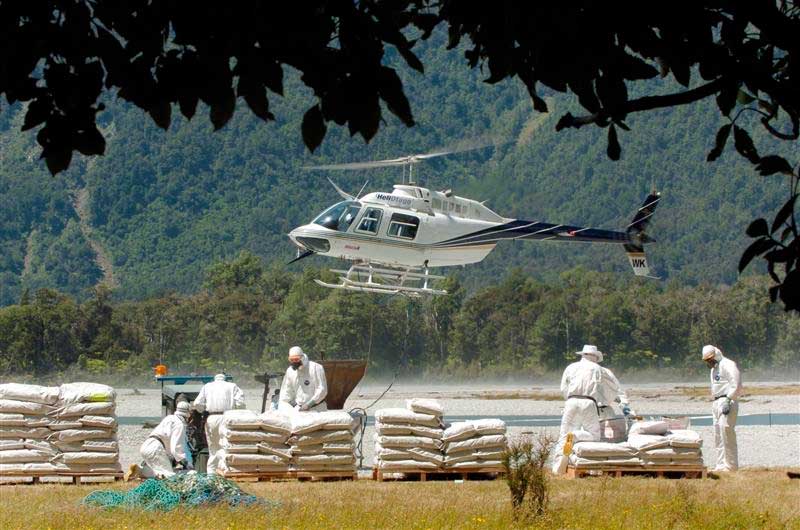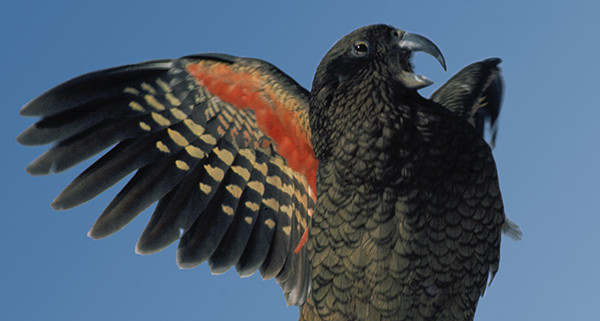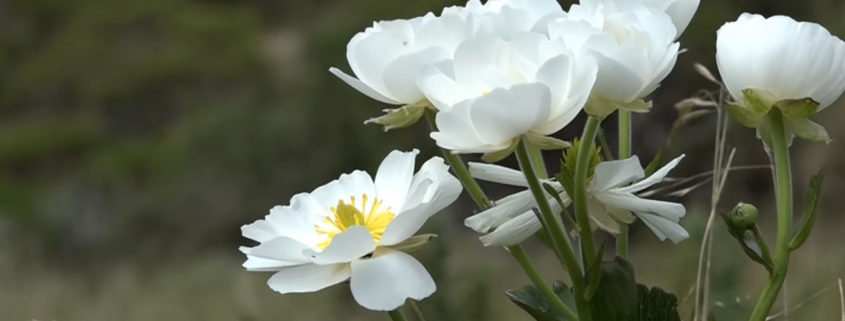PUBLISHED BY SCOOP INDEPENDENT NEWS
For many decades New Zealand has been racked by arguments over the widespread use of aerial 1080 poison. Both sides of the argument are supported by intelligent and committed conservationists so why can’t consensus be found when both sides care deeply about the birds and the forests.
The answer lies in what the opposing parties expect the outcomes from the aerial poisoning operations to be. From the pro-poisoning side we have numerous examples put forward of the results of successful operations.
An example of this is the widespread media coverage of the results from the Tongariro Forest Sanctuary where a 45% improvement in fantail nesting success was hailed as an example of the successful use of aerial poisoning operations.
This result was honest and truthful and the pro-poisoning group, and the general public at large, had every reason to be impressed and to support continuing poisoning operations in the belief that further ecological gains could be made from more such operations.
What was not widely reported though were the results of fantail nesting success in the same area in the following years and these are as follows[i]:-
2000 – 20.2% nesting success baseline estimated from reported results.
2001 – Widespread aerial 1080 drop.
2002 – 45% nesting success from 32 nests.
2003 – 11.76% nesting success from 62 nests.
2004 – 12.2% nesting success from 47 nests.
2005 – 16% nesting success from 32 nests.
This is a perfect example of why we have two different opinions of aerial 1080 poisoning operations.
One group, the aerial poison supporters, see the results after one year and rejoice. Those who oppose aerial poisoning operations look at the results after three years in dismay and this is why we have so much conflict.
We are looking at different results.
Does it matter? – It sure does.
This operation showed clearly that although the aerial poisoning operation helped individual fantails with their nesting success in the year after the poisoning operation it did not extend to a benefit to the fantail population as a whole and this is where it matters. Any pest control operation for ecological benefit is pointless unless it translates into more birds in the population three and four and more years later.
These fantail results are not one off events, I do not have the baseline values but other examples are:-
Kiwi call frequency after an aerial 1080 operation[ii]
2001: 2.08 calls/hr.
2004: 1.4 calls/hr.
2005: 0.9 calls/hr.
2006: 0.6 calls/hr.
And again:-
Blue Duck pairs after a 2001 aerial 1080 operation [iii]
2003: 44
2004: 30
2005: 22
And more:-
Following a large aerial 1080 operation in 2001 the five-minute bird counts in 2005 showed a dramatic decline in:-
tomtit (down 77%)
fantail (down 77%)
warbler
robin
There is a large list of operations where widespread aerial 1080 poisoning operations produced marked increases in bird populations in the short term but the benefits were not carried on to the population level. In ecological benefit terms, they were ineffective.
Why is this?
Why don’t the short term results translate into more birds in the population?
To find this out we need to go to the science.
A hint of the problem was given to me by John Innes of Landcare Research many years ago during a lecture on tui habitat enhancement.
John used a whiteboard to list the three most important predators of our native bird species and he wrote them up on the board in the following order of importance:-
RATS
RATS
RATS
What he was explaining, in a very effective way, was that although cats take some birds, as do possums, stoats, myna and a variety of other species, they don’t come close to rats as the major predator of our native birds.
Rats have been around for about 700 years and in that time have been the sole or a contributing factor in the extinction of 34 of our native species.[iv]
With such a notorious record we need to have a closer look at how it is, that even today, rats are able to unleash such an onslaught on our indigenous species.
A pointer is given in websites such as the ‘Northland Regional Council’ where they state “The impacts on these species have been monitored on only a few occasions. Ship rat populations were reduced by 87 – 100% following six aerial 1080 operations for possum control but the population recovered within four to six months.”
Another concerning point is raised in the website ‘Enuf is enuf’.
Despite initially reducing rat populations with aerial 1080 the rat’s prodigious ability to breed quickly overcomes the loss so that by 18 months after a drop the rat population is twice the pre-1080 population. By 25 months the rats are up by nearly 300%.”
These comments are startling but do not identify the science to back up the claims. Without references to good science they might merely be opinion.
To get sound answers that we can have confidence in we need to turn to science.
Most recent research in this country has been undertaken in an effort to support the use of widespread aerial poisoning. As such the aim of the science has largely been to identify the BENEFITS of the poisoning campaigns not the IMPACTS of them.
It has been widely identified that our science is contaminated by what is known as ‘paymaster bias’ whereby the researchers unconsciously tend to produce the answers the employing agency wants to find. There are large numbers of examples of this unconscious bias internationally (the impact of cigarette smoking on health is a good example) and it is not the purpose of this document to expand on that but merely to point out that, because of it, good science into the impacts of aerial poisoning operations is hard to find.
Unfortunately, in general, the only facts we can draw on are the small snippets and aside comments which appear from time to time in the mainstream science.
These small gems form the basis of the discussions which follow.
The comments in the websites are supported by a science paper which states [v]:
“even when rat densities were reduced by 90%, they recovered within 2-5 months (Innis et al 1995).”
Other science supports this observation[vi]
“Ship rat numbers can be reduced by 90% but this effect is short lived (Warburton, 1989; Innis and Williams, 1991)”
And in the same paper the comment after a widespread aerial 1080 poisoning operation on the 10th September 1990
“In the following January rat abundance was still only 11% of the pre-poison average, but by April there was no significant difference between pre- and post-poison rat indices (Innis and Williams, 1991)”
In other words the rat population had completely recovered after seven months.
A Landcare Research paper[vii] notes
“The 1080 poison killed most of the possums and ship rats in the operation area but not the mice. However it took less than a year for the ship rat numbers to bounce back to densities they were previously (5 per ha). In the next six months rat numbers doubled on the 1080 sites and remained at this level for the duration of the study.”
And this comment[viii]
“This study presents evidence that there was a substantial and sustained increase in ship rat abundance over several years in the podocarp-hardwood forests of Waihaha following the initiation of [aerial 1080] possum control.”
And more warnings[ix]
“in the 1080 block no rats were tracked 2 months after possum control then tracking rates steadily increased to very high levels (85%-88%) over the next two years . As a result, rat tracking was significantly lower in the 1080 block than in the non-treatment block in November 2002 and March 2003 but significantly higher in November 2004 and March 2005 peaking at 3.2-fold higher.”
And another one although the evidence is now getting to be overwhelming[x]:
“At Waihaha, possum numbers were first reduced to low levels in 1994. This resulted in a sustained 4-5 fold increase in rat abundance. Possum control was repeated in August 2000 using aerially sown 1080 baits and provided effective rat control for about a year before their numbers rose to the high levels seen prior to August 2000.”
These burgeoning rat populations generated by aerial poisoning operations have a worrying impact further downstream of the event as highlighted by Landcare Research[xi]
“These results suggest that the huge sustained increase in rat abundance following initial possum control in 1994 was reversed by further control in 2000. Since then rat populations have increased rapidly. This increase may have serious consequences not only for native species preyed on by rats but also for native species threatened by stoats or cats as both these predators may increase when rats (a major element in their diet) are very abundant.”
Remember that stoats have been recognised as the major predator of kaka.
It should be remembered that not all the stoats are killed by secondary poisoning and the ones left behind have just lost their main food source of rats so what do they eat now? Native birds and invertebrates that’s what, as shown in this paper:[xii]
STOAT DIET CHANGE AFTER POISONING RATS
|
| Diet |
Before Poisoning |
After Poisoning |
| Rats |
71% |
17% |
| Birds |
6% |
56% |
| Invertebrates |
6% |
17% |
|
|
|
The harm to invertebrate populations is further identified in other papers such as:[xiii]
“In the poisoned block, the number of large invertebrates known to be eaten by rats soared after rat numbers were reduced to near zero, and then plummeted as rat numbers exploded to very high levels. In contrast, in the un-poisoned area, the numbers of rats and of the common large invertebrates remained more or less stable.”
And a sobering, or perhaps terrifying, comment[xiv]
“Intermittent control of possums and ship rats may have the net effect of increasing ship rats most of the time (Sweetapple and Nugent 2007)”
What these researchers are saying is that an untreated area of forest will have a lower average number of rats than an area which receives regular 1080 drops.
This is exactly the opposite of what is intended by aerial poisoning pest control for ecological benefits.
The science points noted above all indicate very bad things happening in our forests after aerial 1080 operations have artificially boosted rat populations to levels which no indigenous species can possibly hope to cope with in the medium to long term.
I have personal experience of these vast plagues of rats after aerial 1080 operations in Pureora Forest Park.
One evening I set a trap because we had rats everywhere, before I had a chance to get into my sleeping bag the trap went off, I thought it had sprung itself so went to reset it only to find it had already caught a rat, I reset it and before I could get to my sleeping bag a second time the trap went off again but this time I had caught three rats at once. At that point I gave up.
On another occasion I set a rat trap on the roof of my bivvy, as I stepped back a rat ran out from under the roof and immediately got caught, as it was kicking its last it flipped the trap upside down and was still twitching when a second rat ran out and crawled under the trap to eat the cheese bait. I was less than two metres from all this activity.
This gives an indication of how desperate rats get when large populations face starvation.
Imagine a wee short tailed bat fossicking on the forest floor amongst that teeming horde of assassins.
It spells doom for many native birds, plants, animals, and invertebrates.
Why do rats repopulate a poisoned area so quickly?
The reason is that during the poisoning operations we remove some of their predators (secondary poisoning kills cats and stoats) and competition for food and shelter.
In other words we artificially create a perfect storm for rat breeding.
When we add the enormous breeding potential of rats to this perfect storm we have provided a disaster in the making as noted here:[xv]
“Should a large percentage of rats face extermination, those that survive will multiply their reproductive rate and restore the old population level to such an extent that just two rats have the ability to create a lineage of a million descendants in 18 months tops!”
“Rats are capable of reproducing at about 3 months of age. After mating pregnancy lasts for 21-24 days and averaging 6-11 young rats in a litter”
“Female rats can breed again 1 to 2 days after giving birth.”
In the same time it takes a native bird species to produce four young a pair of rats can produce 4000.
Another huge advantage provided to the rat population recovery efforts is the unusual breeding cycle of its major predator the stoat. We know that stoats eat rats, lots of rats, but their population recovery after a poison operation is delayed by a process called delayed implantation (sometimes called embryonic diapause). It is a fascinating subject for researchers but sufficient for us to note that:[xvi]
“Mating occurs in early summer, but births do not occur until the spring of the following year, as development of the fertilised egg is delayed for eight to nine months.”
This extremely long lag phase in the stoat population growth curve gives the rats a huge head start in developing a population with minimal predation.
How can we have ignored the severe negative impacts on our indigenous species from aerial 1080 operations for so long?
Perhaps our New Zealand science is unsound, biased, or just plain wrong!
To check this hypothesis we need to look at 1080 poisoning projects targeting rats in another country to see if their results confirm or oppose our conclusions.
Researchers in England undertook a rat poisoning campaign using hand placed 1080 baits in an effort to identify what happens to a rat population after poisoning.
Some important points noted in this science[xvii] are:-
“thus after 6 months the rat population was about the same size whether the starting point was over 3000 g or less than 1000 g.”
This science uses the weight of bait uptake to estimate changes in rat population density, the reference to 3000 g indicates a high population (because of the high bait uptake) and the 1000 g infers a lower population because only a small amount of bait was taken.
The point is it didn’t matter how severely the populations had been reduced they all recovered to pre-poisoning levels within six months.
And:
The most important censuses in district B were those of Period 5, made after the very successful double treatment. These censuses show an exceedingly rapid rate of increase in the number of rats, which within three months brought the population to a point near the curve for period 4.”
This comment refers to a double poison trial which reduced the rat population by 97.1% but that population subsequently increased to a level equal to the trial where only 87% of the rats were removed. This supports other conclusions in this science which highlights that rat populations return to pre-poison levels very very rapidly.
This trend is noted again:
The apparent total obliteration of the rat population was followed 6 weeks later by a census indicating that the population was now restored to the level to be expected had only 90% of the rats been killed.”
The summary to this science paper notes:
Poison treatments after pre-baiting, at intervals of 6 months, reduced the rat population of each district to less than 10% of the maximum. A rapid restoration of the population followed, and the level reached in 6 months was near the maximum.”
It is clear that the result of science overseas is unambiguous in its support of our own.
So why don’t we do aerial 1080 poison drops every year to keep the rats under control?
The answer to that is easy.
Aerial 1080 poison drops kill native birds too, lots of birds, and lots of other native species as well. This fact is freely acknowledged by the pro-poisoning groups.
After an aerial poisoning operation it takes several breeding cycles for the poisoned bird populations to struggle back to pre-poison levels. If the poisoning cycles are too frequent then some native species will quickly be eliminated. It is possible that some already have.
Remember also that these poisoned bird populations have to try and regain their pre-poison population levels in the face of an artificially induced rat onslaught.
Other overseas science disagrees with the way we regularly utilise aerial 1080 for rat, and other, pest control operations.
One such paper concludes:[xviii]
“Poisoning campaigns with 1080 should be used only when they are the best choice from a suite of alternative methods, rather than as a frequently repeated panacea for pest control.”
Why don’t we know more about the negative impacts of aerial 1080 poisoning operations?
The main reason is because we are NOT LOOKING!!!
Poison operations are expensive and the point frequently raised is that if we spend money on monitoring then that is less area we can afford to poison.
Very few, if any, resource consents for poisoning operations require the applicants to monitor the operation for unforeseen negative impacts.
We have scientists who warn against this blasé attitude such as Clare Veltman when she raised a red flag with this important comment: [xix]
“Randomized blind replicated experiments may permit strong inference about the risks to non-target forest animals from aerial application of baits containing 1080, but no such experiment has ever been done in New Zealand.”
And again in this comment:[xx]:
“First, indirect effects of control operations do have the potential to reduce the planned-for benefit. Second, thresholds in the strength of control employed can potentially occur, across which indirect effects switch from being of conservation benefit to being of conservation concern.”
And a final comment from overseas science:[xxi]
“Without at least some post-eradication monitoring, managers cannot possibly catch totally unanticipated side effects or know whether and when to implement contingency plans for dealing with undesired outcomes.”
The main reason we are not looking for unintended consequences is that the Department of Conservation has an institutionalised infatuation with aerial 1080 poisoning operations and uses its position to produce public information which can almost be classed as dishonest.
An excellent example of this is when I received two kokako research science papers from the Department under the Official Information Act.
The cover letter states that:
“The first two papers show long term improvements in kokako populations after aerial 1080 operations.”
Studying the science shows no such thing.
Aerial 1080 was used annually from 1990 to 1993 but the graph of the number of territorial adults on page 209 shows a gradual loss of population over this time.
It is only after 1993 when targeted pest control using brodifacoum in bait stations was instigated that the kokako population increased markedly. 1080 poison was used in 1995- 1996 but it was placed in bait stations in place of brodifacoum that season not aerially broadcast.
It can be seen from this that although the Department was strictly correct in stating that the population did increase after aerial 1080 operations the inference should not have been that aerial 1080 operation was the cause of it as it is simply not true.
It is like saying that the sea got rough after the petrol in my car ran out. It is true but totally irrelevant and mischievous.
In another example a high DOC official stated on national television that without aerial 1080 the Mapara kokako population would not exist. This is in the face of the science produced by the project which shows that the kokako population continued to decline while aerial 1080 was being used.
These sorts of statements are designed to be misleading so the general public remains supportive of unscientific and ineffective pest control campaigns and their funding streams.
Why is this?
Why is the Department of Conservation continuing to support aerial 1080 operations in the face of overwhelming evidence showing it is harmful to our native species?
Why are they blind to the science? – I don’t know.
The Department of Conservation has a large staff of outdoors oriented ecological experts with a passion for our native critters.
Why are they turning a blind eye to the destruction of native species which the artificially induced rat populations are causing?
Is it simply that they don’t know what else to do?
Is it because they have been aerially poisoning for so long that it is now entrenched and “just the way we do things”?
Is it because they have supported aerial 1080 poisoning operations for so long that they are now afraid of losing face if they admit that they have been wrong for so long?
Is it just because aerial 1080 is the easiest and they don’t know what to do next but have to be seen to be doing something?
Ponder this simple question.
This year is a mast year and the Department has received around 12 million dollars in extra funding for aerial poison operations to limit rat populations (remember aerial 1080 does NOT kill mice).
We know from the science that the operations are going to generate very large rat populations in the years following the poison drops.
What is the difference between high rat numbers created by a mast year and high rat numbers created by the control operations themselves?
The only difference is the 12 million dollars.
No doubt if any New Zealand ecological scientists read this document they will say that everything I have identified here is old knowledge which has been around for ages, and it has.
The question to ask then is “What are they doing about it?”
An even more important question is “What are we doing about it?”
We have been misinformed by a whole series of organisations including Animal Health Board, Department of Conservation, Regional Councils, Forest and Bird, even the Commissioner for the Environment and Central Government.
All have played a part in what can only be classed as propaganda in their push for aerial 1080 operations alleging benefits to indigenous wildlife when the science shows that it cannot be true at the population level which is where it matters.
Yes we definitely have ‘Silent Forests’ in New Zealand, no question, and both the pro-aerial poison and anti-aerial poison groups agree on this.
Until we fully understand WHY we have silent forests we don’t stand a chance of developing successful strategies to ‘bring back the birds’.
It is a given that rats kill large numbers of native species.
It is also a given that aerial 1080 operations breed large numbers of rats.
Go figure.
Research is the search for the truth.
Management is the application of the truth.
There shouldn’t be any argument.
Murray Dench
dpds@xtra.co.nz
13/05/14
[i] The Annual 2005/2006
[ii] Tongariro Forest Kiwi Sanctuary Annual Report 2005/2006
[iii] Rare Bits. 2001
[iv] Extinct Birds of New Zealand. Alan Tennyson and Paul Martinson
[v] New Zealand Journal of Zoology, 2001. Vol 28 57-78
[vi] Change of diet of stoats following poisoning of rats in a New Zealand forest. Elaine Murphy and Philip Bradfield
[vii] Species interactions and consequences of pest control in forest ecosystems. Protect. Autumn 2010
[viii] Ship rat demography and diet following possum control in a mixed podocarp-hardwood forest. Sweetapple et al Available from http://www.newzealandecology.org/nzje/
[ix] Effect of reduced possum density on rodent and stoat abundance in podocarp-hardwood forests. Sweetapple et al DOC Research and Development Series 231
[x] Kararehe Kino Vertebrate Past Research. Dec 2007
[xi] He Korero Paihama. Issue 17 June 2002
[xii] Change in diet of stoats following poisoning of rats in a New Zealand forest. Short communication. Elaine Murphy and Philip Bradfield.
[xiii] Vertebrate Pest Research. Dec 2007
[xiv] Feathers to Fur. The ecological transformation of Aotearoa/New Zealand Innes et al.: What limits NZ forest birds? Available at http://www.newzealandecology.org/nzje/
[xv] http://seriousfacts.com/rats-multiply-so-quickly-that-in-18-months-two-rats-can-have-over-a-million-descendants/#ixzz30POyBdaA
[xvi] http://www.arkive.org/stoat/mustela-erminea/factsheet
[xvii] Population Dynamics of Sewer Rats. S.A Barnett Dept of Zoology, University of Glasgow and A.H Bathard Ministry of Agriculture and Fisheries, Tolworth, Surrey.
[xviii] Proceedings of the Fifteenth Vertebrate Pest Control Conference 1992. University of Nebraska. The Effect on Australian Animals of 1080 Poisoning Campaigns. John C McIlroy. Division of Wildlife and Ecology.
[xix]Uncertainties remaining about non-target effects of aerial 1080 operations and experimental designs for exploring them. Veltman and Westbrooke.
[xx] Unexpected Consequences Of Vertebrate Pest Control: Predictions From A Four-Species Community Model. Tompkins and Veltman
[xxi] It’s often better to eradicate, but can we eradicate better? E S Zavaleta. Dept of Integrative Biology, University of California.





